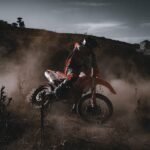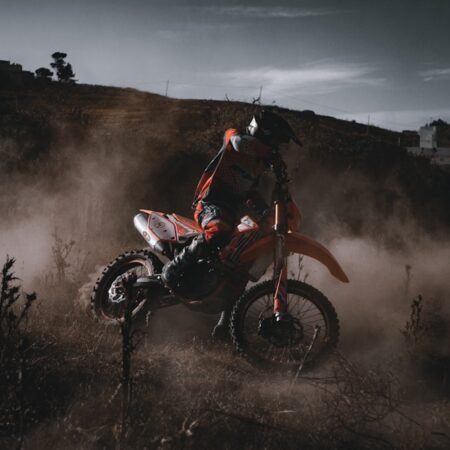Drone photography has become increasingly popular in recent years, allowing photographers to capture stunning aerial images from unique perspectives. However, the process doesn’t end once the photos are taken. Post-processing is an essential step in enhancing and perfecting drone photos to achieve professional-looking results. Understanding the basics of post-processing for drone photography is crucial for creating captivating and visually appealing images.
One of the key aspects of post-processing for drone photography is understanding the different file formats and settings that drones use to capture images. Most drones capture images in RAW format, which allows for greater flexibility and control during post-processing. Understanding how to work with RAW files and adjust settings such as exposure, white balance, and contrast is essential for achieving the desired look in drone photos. Additionally, understanding the basics of color correction, sharpening, and noise reduction can significantly improve the overall quality of drone images. By mastering these fundamental post-processing techniques, photographers can elevate their drone photography to new heights.
Selecting the Right Software for Editing Drone Photos
Selecting the right software for editing drone photos is crucial for achieving professional-looking results. There are numerous photo editing software options available, each with its own set of features and capabilities. When choosing a software for editing drone photos, it’s important to consider factors such as ease of use, compatibility with RAW files, and the range of editing tools available. Adobe Lightroom and Photoshop are popular choices among photographers for their comprehensive editing capabilities and seamless integration with RAW files. These programs offer a wide range of tools for adjusting exposure, color, contrast, and other essential elements of drone photography. Other software options such as Capture One and Luminar also provide powerful editing tools specifically designed for working with RAW drone images. Ultimately, selecting the right software for editing drone photos comes down to personal preference and the specific needs of the photographer.
In addition to traditional photo editing software, there are also specialized programs and plugins available specifically for drone photography. These tools often include features such as lens correction, perspective control, and automated batch processing, which can streamline the editing process and enhance the overall quality of drone images. By exploring different software options and experimenting with their features, photographers can find the right tools to bring their drone photos to life in post-processing.
Enhancing Color and Contrast for Stunning Aerial Images
One of the most impactful ways to enhance drone photos in post-processing is by adjusting color and contrast to create stunning aerial images. Aerial photography offers a unique perspective that can be further enhanced through vibrant colors and striking contrast. In post-processing, photographers can use tools such as color grading, saturation adjustments, and selective color editing to bring out the natural beauty of landscapes and cityscapes captured from above. By carefully balancing color and contrast, photographers can create visually captivating aerial images that draw viewers in and leave a lasting impression.
In addition to traditional color and contrast adjustments, photographers can also experiment with creative techniques such as split toning and selective color grading to add depth and dimension to their drone photos. These techniques allow photographers to fine-tune the mood and atmosphere of their aerial images, creating a more immersive and engaging visual experience. By mastering the art of enhancing color and contrast in post-processing, photographers can elevate their drone photography to new levels of creativity and visual impact.
Removing Distractions and Imperfections from Drone Photos
When capturing aerial images with a drone, it’s common to encounter distractions and imperfections that can detract from the overall quality of the photos. In post-processing, photographers have the opportunity to remove these distractions and imperfections to create clean and polished drone images. Tools such as spot healing, clone stamping, and content-aware fill can be used to seamlessly remove unwanted elements from aerial photos, such as sensor dust, lens flares, or other visual distractions. Additionally, photographers can use advanced retouching techniques to smooth out uneven textures or blemishes in landscapes or buildings captured from above. By carefully removing distractions and imperfections from drone photos in post-processing, photographers can ensure that their aerial images are visually compelling and free from any visual distractions that may detract from the overall impact.
In addition to removing distractions and imperfections, post-processing also offers opportunities to enhance the overall clarity and sharpness of drone photos. Tools such as sharpening, clarity adjustments, and noise reduction can be used to fine-tune the details and textures in aerial images, resulting in a more polished and professional look. By carefully addressing distractions and imperfections while enhancing clarity and sharpness in post-processing, photographers can ensure that their drone photos are visually stunning and free from any visual distractions that may detract from the overall impact.
Creating Dynamic and Engaging Composition in Aerial Shots
Composition is a critical element of photography that plays a significant role in creating dynamic and engaging aerial shots with a drone. In post-processing, photographers have the opportunity to further enhance the composition of their aerial images through cropping, straightening, and perspective adjustments. By carefully refining the composition of drone photos in post-processing, photographers can create visually compelling images that draw viewers in and convey a sense of depth and scale from an aerial perspective.
In addition to traditional composition adjustments, photographers can also experiment with creative techniques such as adding leading lines, framing elements, or incorporating negative space to create a more dynamic and engaging composition in their aerial shots. These techniques allow photographers to guide the viewer’s eye through the image and create a sense of movement and visual interest from above. By mastering the art of creating dynamic and engaging composition in post-processing, photographers can elevate their drone photography to new levels of creativity and visual impact.
Utilizing Advanced Techniques for Unique and Creative Drone Photography
In addition to mastering the basics of post-processing for drone photography, photographers can also explore advanced techniques to create unique and creative aerial images that stand out from the crowd. Advanced techniques such as panoramic stitching, HDR blending, and exposure blending can be used to capture a wider dynamic range of aerial scenes and create visually stunning images with rich detail and depth. These techniques allow photographers to push the boundaries of traditional aerial photography and create truly unique and captivating images from above.
Furthermore, photographers can also experiment with creative effects such as long exposure simulation, infrared conversion, or black-and-white conversion to add a unique artistic flair to their drone photos in post-processing. These creative techniques allow photographers to explore new possibilities for expressing their vision through aerial photography and create visually striking images that leave a lasting impression on viewers. By utilizing advanced techniques for unique and creative drone photography in post-processing, photographers can push the boundaries of traditional aerial photography and create visually stunning images that stand out from the crowd.
Tips for Maintaining a Consistent and Professional Look in Post-Processing
Maintaining a consistent and professional look in post-processing is essential for creating cohesive and visually appealing drone photography portfolios. One of the key tips for achieving consistency in post-processing is to develop a personalized editing style that reflects the photographer’s vision and aesthetic preferences. By establishing a consistent approach to color grading, contrast adjustments, and composition refinements, photographers can ensure that their drone photos maintain a cohesive look across different scenes and subjects captured from above.
Another important tip for maintaining a professional look in post-processing is to pay attention to detail and avoid over-editing or excessive manipulation of drone photos. While it’s tempting to apply dramatic effects or heavy-handed adjustments in post-processing, it’s important to exercise restraint and focus on enhancing the natural beauty of aerial images without compromising their authenticity. By carefully balancing creative expression with technical precision in post-processing, photographers can ensure that their drone photos maintain a professional look that resonates with viewers.
In conclusion, understanding the basics of post-processing for drone photography is essential for creating visually compelling aerial images that stand out from the crowd. By selecting the right software for editing drone photos, enhancing color and contrast, removing distractions and imperfections, creating dynamic composition, utilizing advanced techniques, and maintaining a consistent look in post-processing, photographers can elevate their drone photography to new levels of creativity and visual impact. With careful attention to detail and a thoughtful approach to post-processing, photographers can create stunning aerial images that leave a lasting impression on viewers.








